China Net/China Development Portal News Scientific instruments are important means and tools for human beings to perceive and understand the world, and can effectively promote the deep integration of science and technology and economy. A new round of scientific and technological revolution and industrial transformation is accelerating. Major scientific discoveries and technological breakthroughs are increasingly inseparable from the support of major scientific and technological infrastructure (hereinafter referred to as “major facilities”) and advanced scientific instruments. Major countries in the world have elevated the development of scientific instruments to a national strategic level and established relatively complete national-level funding management systems. The United States not only occupies the technological high ground in the field of scientific instruments, but also occupies a dominant position in instrument manufacturing and industry markets. At the same time, in order to support research on cutting-edge scientific issues, major facilities can create higherZelanian sugarNewzealand Sugar Energy, greater density or higher intensity extreme research conditions, the breakthrough technology generated during the construction and operation process can derive high-end scientific instruments.
The innovation of scientific instruments refers to the formation of new principles, new methods and new technologies through research and development, using application needs as the guide, using engineering and technical means to form new instrument products, and putting them into the market to gain economic benefits. efficiency process. This article draws on the concept of product innovation value chain proposed by Yin Xuemei, combined with the characteristics of the scientific instrument innovation process, and divides the scientific instrument innovation value chain into basic research stage, conceptualization stage, productization stage, and commercialization stage. In recent years, in order to enhance innovation competitiveness and accelerate the transformation of breakthrough technologies into breakthrough innovations, the European Union has proposed a project funding model that connects the scientific instrument innovation value chain – the ATTRACT project. The project aims to unite European major facility operation and management agencies, academia, and industry to jointly develop next-generation detection and imaging technologies and related products to bridge the gap between basic research and market demand. An in-depth analysis of the innovative measures and management funding characteristics of the ATTRACT project will help accelerate the transformation of advanced technologies in major facilities, optimize scientific instrument research and development and funding models, improve my country’s independent innovation capabilities and international competitiveness of scientific instruments, and provide solutions for the development of high-end scientific instruments in my country. Provide inspiration and reflection on relevant issues faced.
Analysis of project funding characteristics based on scientific instrument innovation value chain
Transforming breakthrough technologies into breakthroughsNewzealand Sugar-style innovation until it is transformed into products and enters the market usually needs to cross the “Valley of Death” (Figure 1), which takes a long time. For example, American physicist Zelanian EscortTheodore Maiman developed the world’s first operational laser prototype in 1960, 43 years after Einstein proposed the theory of quantum electromagnetic radiation. In order to identify and support breakthrough technologies and innovations with market application potential, the European Council decided to establish the ATTRACT project in 2018 to accelerate the transformation of advanced detection and imaging technologies during the development and construction of major facilities into scientific instrument products. This project has distinct characteristics of technology transformation and market orientation. With the successful implementation of the project, the European Commission established the European Innovation Council (EIC), and the ATTRACT project funding model has been Promote and apply it to other EIC projects and technical fields.

Phased iterative funding to help new technologies cross the valley of death
As a funding tool, the ATTRACT project adopts a phased funding approach. This is similar to the funding of disruptive technologies by the U.S. Defense Advanced Research Projects Agency (DARPA). The difference is that the ATTRCT project emphasizes the iteration and integration between the two stages and between technologies in different fields to achieve the goal of identifying and cultivating basic research from major facilities. A continuous cycle of transforming breakthrough technology Zelanian sugar into breakthrough innovation (Figure 2). At present, the ATTRACT project has completed two phases of project funding (2018-2022) in the field of detection and imaging technology, and will expand this funding model to the field of earth observation in 2023.
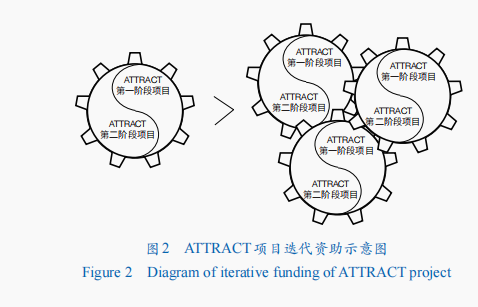
Original breakthroughs from “0” to “1” in basic research at major facilities
Major facilities are cutting-edge science and pioneersZelanian EscortThe combination of advanced technologies not only provides an advanced experimental platform for scientific research, but also serves as a platform for innovation and development of scientific instruments.an important source of development. Obtain higher resolution, higher sensitivity, and higher precision experimental observation methods for NZ Escorts, and effectively promote the development and construction process of major facilities It promotes the development of advanced materials, imaging technology, detection technology and other fields, thereby promoting the development and innovation of scientific instruments. For example, the X-ray detection technology used in synchrotron radiation light sources has been successfully used in a variety of analytical instruments, including X-ray diffractometers and electron microscopes. In addition, scientific research carried out using major facilities will further promote the research and development of advanced materials and high-performance devices, and will also give birth to a series of innovative technologies. These new technologies not only improve the performance of existing scientific instruments, but also provide the possibility to develop new types of instruments.
The ATTRACT program is based on this and is an initiative initiated by the European Center for Nuclear Research (CERN). The purpose is to develop breakthrough technologies derived from basic research at major facilities into breakthrough innovations that meet the needs of future society, such as Advanced sensors and detectors, high-end microscopes, and more. In addition to CERN, major European facilities operation and management agencies participating in the plan include the European Synchrotron Radiation Source (ESRF), Zelanian sugar EuropeX X-ray Free Electron Laser (EuXEFL) Company, Laue-Langevin Institute (ILL), European Molecular Biology Laboratory (EMBL), European Southern Observatory (ESO).
Seed funds realize proof of concept from “1” to “10”
The first phase of the ATTRACT project aims to identify breakthrough technologies and absorb the initial investment risks of the industry. This phase promotes cooperation between industry, Newzealand Sugar‘s major facility operations and management agencies, and their relevant users to identify what is needed to help address social challenges. breakthrough technical solutions. Compared with the traditional path, this method can effectively shorten the technology iteration cycle (Figure 3). Specifically, this stage uses seed funds to fund high-risk and high-commercial value detection and imaging technology proof-of-concept, and raises its Technology Readiness Level (TRL) from TRL Sugar Daddy1-2 increased to TRL 4. Proof of concept is at the front end of the scientific instrument innovation value chain and is also the first step in the transformation of technological achievements across the “valley of death”. The execution period of this stage is 12 months, which is basically the same as the time required to develop conceptual prototypes for scientific instrument development projects. The research directions include sensors, data acquisition and computing systems, software development and software integration, and front-end/back-end electronics. . A total of 170 projects were funded during this phase(The total number of proposals is 1,211, and the approval rate is about 14%). The funding for each project is 100,000 euros, and the funding is provided by the European Union’s “Horizon 2020” program.
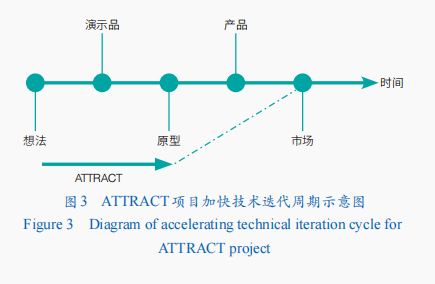
Scale financing enables product development from “10” to “100”
The second phase of the ATTRCT project adopts scale financing, introduces market capital, and continues to fund projects that have passed the first phase of testing and have the greatest potential for technology transformation. Breakthrough technology concepts, as well as related technology concepts with industrial application potential developed for the development of major facilities, further improve technology maturity. This stage can be regarded as a public financial tool, using financial funds to reduce transformation risks, so that the capital market can effectively undertake and cross the “valley of death” of breakthrough technologies. R&D and innovation projects at this stage are divided into two funding models: demonstration system (demonstrator) and industrial system (industrial system). The proposals require that the technology maturity reaches at least TRL 3, and the deliverables are technology mature Sugar Daddy A complete prototype system with TRL 6-7, including actual operationZelanian EscortKey functions required (such as data processing, compression, transmission and storage), and there must be clear market application scenarios. The former requires that it can prove that the technology maturity can reach TRL 5-6 after the end of the project, and the maximum funding amount is 500,000 euros. The latter requires the ability to prove that the technology maturity reaches TRL 7 and above after the end of the project, and the funding amount is up to 2 million euros. At this stage, 18 projects were funded (a total of 68 proposals, a pass rate of about 26.5%), with a total funding of approximately 25 million euros. The research directions include quantum information, environmental monitoring, terahertz imaging/ranging, and high-efficiency photon detection systems. wait. NZ EscortsBuild a collaborative innovation ecosystem. In addition to major facility operation management agencies and related users, the industry (European Industrial Research Management Association EIRMA), business innovation management experts (AaltoUniversities, Spanish ESADE Business School) and other stakeholders actively participated in it. This collaborative innovation model breaks the traditional procurement-buyer model, in which breakthrough technologies are transferred from major facilities to enterprises and enterprises passively absorb them. This model proposes starting from “Is it more pitiful than Caihuan? I think this is simply retribution.” Creating the most new value chain of Newzealand Sugar In the initial stage, innovation value generators (major facilities and their user groups) and innovation value capturers (industry) are placed at the same starting point, and a “technology-industry” win-win is achieved through strong cooperation (Figure 4).
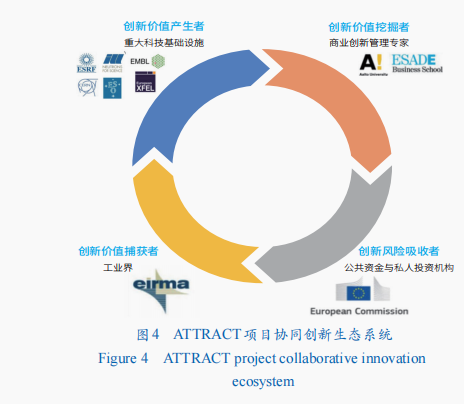
At the same time, the ATTRACT project requires that the applicant must be a consortium, that is, it must include at least two entities, and it requires substantive cooperation between the institutions. Multiple projects must not be bundled, and the technology can be commercialized. Project applicants are required to provide a detailed division of labor and collaboration plan to the expert advisory committee, clarifying the nature of the consortium, unit composition, collaboration methods and processes, costs, risks and benefit distribution, etc.
Project selection and achievement evaluation focus on innovation potential and social impact
After formal review, ATTRACT application proposals are evaluated by the Independent Research and Development Committee (IC) and the Project Advisory Committee (PAC). The former is mainly responsible for evaluating the technical value of the project Zelanian sugar, which is composed of experts from academia, industry and private investors in the field of detection and imaging technology. It is composed of top experts; the latter is mainly responsible for assessing the commercial value of projects and is composed of representatives from European public institutions and private institutions.
From the perspective of project selection and evaluation standards, in addition to evaluating basic project execution elements (such as research objectives, implementation steps, and funding budgets, etc.), the two stages have different emphasis on project selection. The first stage aims to identify, evaluate, and analyze new ideas, new concepts, and new technologies that may have breakthrough innovation potential in the field of detection and imaging technology from different angles. The selection criteria are Sugar DaddyThe standard emphasizes both the technical level of the project and the innovation potential, such as whether the technology to be developed can increase corresponding subject knowledge and promote new industrial applications (Table 1). In the second stage, the project proposal requires that the impact that the project will achieve be described in specific, quantifiable terms.Impact, including scientific and technological impact and industrialization impact. The selection criteria at this stage pay particular attention to the evaluation of the impact of the project proposal, including six aspects: whether the technology demonstration case is relevant to academia and industry, whether the expected industrial application can fill important market gaps, and whether necessary and meaningful publicity work has been carried out. (Table 2), the scoring weight accounts for 50%.
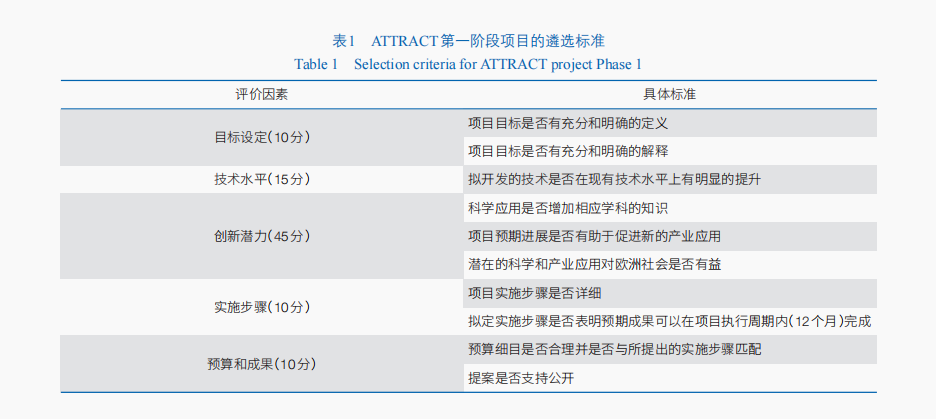
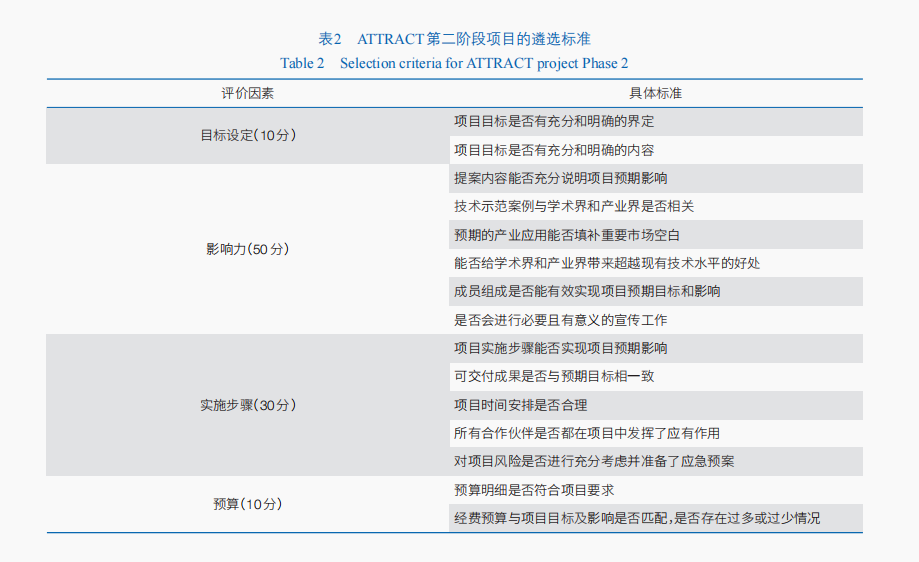
From the perspective of project evaluation standards, judging the success of the ATTRACT project not only examines whether the project itself achieves the predetermined technical goals, but also whether it can create economic and social value. Have broad influence. NZ Escorts Specifically, the ATTRACT project evaluation criteria include: whether it improves the return on investment in major facilities in Europe; whether it strengthens the industry’s scientific understanding of major facilities Utilization of research and technology R&D capabilities; whether it effectively reduces technology development risks and attracts more venture investors to invest in high-risk, high-return technologies; whether it promotes technological innovation and knowledge flow between academic and industrial research teams; whether it Make better use of the potential for interdisciplinary innovation in universities and business schools.
Efficient and flexible organizational management operating mechanism
ATTRACT adopts a flat management organizational structure, including the management coordination layer and the implementation and execution layer (Figure 5). The core management and decision-making unit is the member of the Project Joint Board (PCB), whose main responsibilities are to determine the members of the Independent Research and Development Committee and the Project Advisory Committee, and to approve the list of funded projects provided by the former. The full-time management unit is the Project Administrative Office (PAO), which is mainly responsible for coordination and liaison work. Its members are mainly international big science plan/big science project management experts.
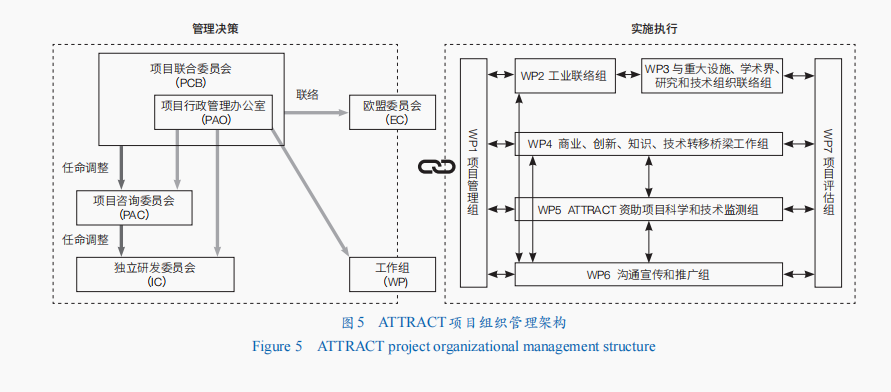
Multiple interrelated working groups (WPs)To ensure the organization and implementation of ATTRACT projects, they have different focuses. Among them, working groups WP2 and WP3 are responsible for contacting industry and academia respectively to identify technologies that may have breakthrough innovation potential. Thought. Working Group WP5 is responsible for monitoring scientific and technological progress during the execution cycle of funded projects, and reporting problems in projects in a timely manner during the process. Working Group WP7 is responsible for evaluating project implementation, focusing on the effectiveness of the project operating mechanism, including the project solicitation process, the transformation of technological achievements, and the expected impact of the developed technology. Based on the evaluation results, the project operation model will be further improved to make it a sustainable and collaborative innovation model that explores high-risk breakthrough project concepts.
The above management and operation mechanism can ensure the availability of the developed detection and imaging technologies, support future technology upgrade plans for major facilities, and establish closer cooperative relationships with user groups; at the same time, it can support the innovative development of small and medium-sized enterprises. , so that it can reserve the development, manufacture and sale of scientific instruments for scientific research and technological development.
The current situation of scientific instrument project organization in my country
The current situation and effectiveness of scientific instrument funding
The government serves as the planner and guide of the innovation system , cultivators, play an important role in strategic planning, organizational mobilization, resource guarantee, and policy guidance, and play an irreplaceable role in promoting the development of the scientific instrument industry. After years of exploration, our country has established a national funding system for scientific instrument principle innovation, key technology and core component research and development, engineering and industrialization, and has achieved significant results in the support and management of scientific instrument and equipment development.
Since the 1990s, the State Council, the National Development and Reform Commission, the Ministry of Science and Technology, the National Natural Science Foundation of China, the Ministry of Finance, the Chinese Academy of Sciences and other relevant departments have successively issued a number of policies and regulations to promote scientific instrumentsSugar DaddyIn the development of scientific instruments, all-round funding has been provided for the development of scientific instruments (Table 3), including basic research, research and development of scientific instruments , achievement transformation and industrialization, upgrading and transformation. In 2011, the central government invested approximately 1.3 billion yuan in the research and development of scientific instruments for the first time, and simultaneously launched the “National Major Scientific Research Instrument Development” and the “National Major Scientific Instrument and Equipment Development Special Project.” In 2021, the “14th Five-Year Plan” national key research and development plan established a key project of “Basic Scientific Research Conditions and Development of Major Scientific Instruments and Equipment” to focus on the major strategic needs of national basic research and scientific and technological innovation, focusing on supporting the engineering research and application development of high-end scientific instruments. Generally speaking, my country’s scientific instrument R&D investment shows a growing trend. The central government will fund approximately 1.5 billion yuan in 2022. It attaches great importance to independent innovation of high-end scientific instruments in order to achieve high-level scientific and technological independence.Self-reliance provides support.
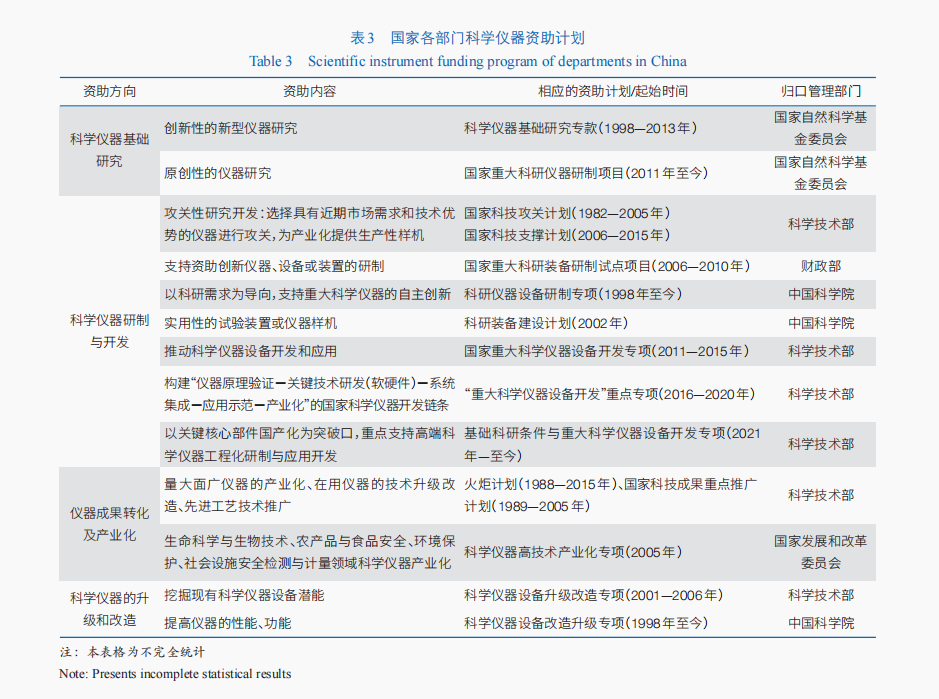
It is necessary to speed up the formulation of a strategic plan for the independent development of scientific instruments in my country, and concentrate superior forces to strengthen research on key scientific instruments and basic software, so that the scientific instrument industry can develop faster and get rid of the situation where key technologies and high-end instruments are controlled by others as soon as possible. With the in-depth implementation of the national-level scientific instrument funding project, high-end scientific instruments and equipment in some key fields have gradually been replaced by domestic ones, and some domestic scientific instruments have reached the international advanced level and entered the international market.
Shortcomings in scientific instrument funding projects
In the process of implementing special projects for scientific instruments at the national level, the National Natural Science Foundation of China and the Ministry of Science and Technology focus on the national strategic needs based on the current development status of scientific instruments. and long-term development, timely adjust the application guidelines for major national scientific research instrument development projects, and concentrate on key technologies and high-end scientific instruments. Overall, the moment my country’s scientific instrument funding model came to a conclusion, Pei Yi couldn’t help but be stunned for a moment, and then said with a wry smile. It has basically opened up the basic research stage from “0” to “1” and the conceptualization stage from “1” to “10”, but the funding for the productization stage from “10” to “100” is relatively low, and many scientific instrument-related technologies The prototypes are still in the laboratory stage and have not been able to cross the “valley of death” of industrialization and become a real instrument product. Specifically, some of the current problems include the following four aspects.
High-risk original projects receive a lower proportion of funding. The development of high-end scientific instruments must be based on new principles, new methods and new technologies. It is a process of continuous “trial and error” starting from basic research, with long research and development cycles and high risks. Insufficient basic research in the early stage is an important factor hindering the development of high-end scientific instruments in our country. The localization of high-end scientific instruments requires more “error tolerance” and “trial and error” opportunities. In recent years, our country has also explored funding methods and evaluation mechanisms for high-risk projects. For example, the National Natural Science Foundation of China has initially established an unconventional funding mechanism for original basic research projects by establishing small-amount exploration projects, director’s funds, original exploration projects, and highly innovative non-consensus projects recommended by experts, and encourages scientific researchers to challenge High-risk basic research, but it has not changed the overall situation of low funding number and funding amount. Projects related to scientific instrument research and development accounted for The ratio is lower. According to statistics, the National Natural Science Foundation of China’s Original Exploration Program funded 329 projects from 2020 to 2022, with direct project funding of 707 million yuan, accounting for approximately 0% of the total number of funded projects..23%, accounting for approximately 0.77% of the total funds. From 2021 to 2022, 151 major free national scientific research instrument development projects will be funded, accounting for approximately 1.94% of the total funding. Generally speaking, state funding is mainly based on competitive projects, using a peer review mechanism, and some Sugar Daddy applicants are awarded project fundsZelanian sugarThe project research plan submitted has insufficient originality. The conservative and prudent funding tendency has resulted in relatively weak funding for high-risk scientific instrument R&D projects.
The application of project results lacks follow-up funding, and the effect of commercialization and marketization needs to be improved. The innovative achievements of scientific instruments meet specific scientific research needs, and whether they can be further promoted and applied is an important factor affecting their vitality. The capital investment ratio required for scientific instruments from basic research, technology research and development, product development to industrialization is approximately 1:10:100:1,000. At the same time, performance improvement of high-end scientific instruments needs to be achieved through high-frequency iteration in practical applications. At present, funded scientific instrument projects have produced a number of product prototypes with application and promotion value. However, due to the lack of continuous funding for applied research and promotion, the process of engineering development and achievement transformation is slowZelanian sugar. At the same time, the state has invested a lot of money in the development of major facilities and has successfully developed a number of high-quality, high-performance special experimental instruments. However, there is still a long way to go before marketization and industrialization. At present, it can be held as originally planned. Before I come to see you, aren’t you angry with Brother Sehun? “The domestic marketization mechanism for prototypes of this type of equipment is poor, and the industrial and market potential of key technologies for major facilities has not yet been fully tapped.
The effectiveness of industry-university-research cooperation has not been fully unleashed, and the innovation ecosystem needs to be improved. Relying on With the continuous funding of scientific instruments from the innovation chain to the industrial chain, our country is gradually building a scientific and technological system with the participation of multiple innovation entities such as universities, enterprises and scientific research institutesZelanian EscortScientific Instrument Innovation Ecosystem Since 2016, the “National Major Scientific Instrument and Equipment Development Project” has clearly stated in the project application guide that “all projects are funded by qualified Newzealand SugarEnterprise takes the lead in applying”, which further clarifies the main role of enterprises in innovation and encourages cooperation with scientific research institutes and universities. However, a project usually consists of 4-5 sub-research groups. Responsibility, project organization modelIt is relatively loose and in-depth cooperation needs to be strengthened. At present, exploration models such as co-building new R&D institutions such as enterprise joint laboratories have emerged. In view of the high-risk nature of the research and development of high-end scientific research instruments, the proportion of investment from industry and society is relatively low. The participation of private enterprises in the front-end links of the innovation value chain needs to be increased, and the organic combination of government coordination and market-oriented resource allocation has not yet been achieved.
The project supervision system is not yet complete and no unified standards have been formed. At present, national-level scientific instrument development projects are characterized by many participants and large amounts of funding. Project supervision and management are becoming an important means of standardized governance for funding agencies. Supervision systems have been implemented for major national scientific research instrument development projects recommended by the National Natural Science Foundation of China and major scientific instrument and equipment development projects of the Ministry of Science and Technology. The project organization department will set up a project supervision team to supervise the project implementation process. The National Natural Science Foundation of China’s free-category national major scientific research instrument development projects have not yet implemented a supervision system. Project implementation is tracked and promoted by the project-supporting units, and supervision is insufficient. Overall, the supervision standards for scientific instrument development projects are not uniform, there are no standardized institutional constraints and authorizations, and there are cases where supervision and inspection are not in place.
Inspiration
Based on the analysis of the organizational model of the ATTRACT project, 4 points of reflection are put forward for discussion, with a view to helping to optimize our countryNZ EscortsThe current scientific instrument project funding management model recommends Newzealand Sugar Promote the development of my country’s scientific instrument all-innovation value chain.
Promote the transformation of technological innovation results in major facilities. As the source of original and leading scientific and technological achievements, major facilities’ technology should be transformed into a driving force for economic and industrial development. At present, the transformation of technological achievements in major facilities in my country has achieved certain results. For example, relying on the Lanzhou Heavy Ion Research Facility, the Institute of Modern Physics of the Chinese Academy of Sciences successfully developed a high-voltage transformer type (DG) electron accelerator. Its overall structure is compact and its power conversion efficiency is high. It has realized industrial application in the field of photo processing; developed the first medical heavy ion accelerator – carbon ion therapy system and realized clinical application, which has taken a new step in the localization of high-end medical equipment in my country. However, most technologies still lack effective marketization paths and need to be further promoted. Guide and strengthen the close cooperation between my country’s scientific instrument R&D institutions and enterprises and major facility construction and operating agencies from the institutional level, set up innovative technology commercial application incubation funds for major facilities, provide support for the transformation of breakthrough technologies into breakthrough innovation, and help emerging industries Cultivation and upgrading of traditional industries.
Strengthen support at the national level for the research and development of original breakthrough technologies. Original breakthrough technology has market uncertainty. Before it can form a marketable product,Currently, a large amount of “sunk cost” investment is required. For the development of technologies with great market uncertainty, the sunk cost should be borne by the state or shared by the state and enterprises. Consideration can be given to further increasing the support of seed funds invested by the state for original research on new concepts, new principles, new methods, and new technologies related to scientific instruments on the existing basis. Since scientific instruments have obvious technical, engineering and market attributes, project review should pay special attention to their commercial value while attaching importance to the originality and scientific value of instrument development. Consideration can be given to establishing an interdisciplinary and interdisciplinary assessment team composed of scientists, instrument manufacturers, and venture capital institutions to effectively identify scientific instrument-related technologies that are high-risk but may lead to major breakthroughs. Strive to create a scientific research ecological environment that tolerates failure and encourages innovation. But in an instant, she understood everything. Wasn’t she just sick in bed? It was natural to have a bitter medicinal taste in her mouth, unless those people in the Xi family really wanted her to die. environment, enhance the confidence of scientific researchers to challenge unknown fields, differentiate between uncertainties caused by the high risk of the project itself and research failures caused by academic misconduct, and ensure fair evaluation of scientific researchers.
Iterative funding in stages to reduce the risk of innovative technology transformation. Scientific instruments have a long cycle from value creation to value acquisition, involving principles, methods, technology, markets, and policies. At present, my country’s scientific instrument development projects cover different links in the innovation value chain, but they are all required to be completed in a short period of time (usually no more than 5 years). The positioning is not strong, the target differentiation is not obvious, and there is no effective connection. Consider using a phased iterative funding approach to actively recruit participants in the innovation value chain who can provide innovative ideas, make full use of the advantages of each innovation entity, and strengthen original breakthroughs from “0” to “1” and “1” to “10” The transformation of scientific and technological achievements and the effective connection of the industrialization of “10” to “100” scientific and technological achievements. At the same time, efforts should be made to attract funds from powerful enterprises and venture capital institutions during the critical stage of industrialization of results, deepen the cooperation mechanism for industry and commercial research and application, and form a complete innovation system and a good innovation ecological environment.
Optimize the project supervision mechanism and improve the efficiency of scientific research investment. Effective project supervision and supervision mechanisms are crucial to optimize resource allocation, timely identify and respond to potential problems and challenges during project implementation, and help ensure that the project can advance according to the established plan and achieve expected goalsNZ Escorts. Therefore, you can consider hiring a third-party professional supervision agency to supervise and guide the entire process, establish a complete consultation and evaluation structure, continuously monitor the project progress and regularly check the key milestones of the project to ensure that the project is beneficial to all stakeholders from project establishment, implementation to completion. be open and transparent. At the same time, consider inviting major facility management experts and technical experts to provide guidance on the project management system of the instrument development unit to further improve project management efficiency and effectiveness. In addition, it is necessary to pay attention to the post-evaluation work of scientific instrument development projects to track the projectPurpose long-term impact and performance, and continuously improve and adjust the project management process based on post-evaluation results to ensure that the benefits of scientific research investment are maximized.
(Authors: Dong Lu, Li Yizhan, Li Zexia, Documentation and Information Center, Chinese Academy of Sciences, School of Economics and Management, University of Chinese Academy of Sciences; Chen Juan, Major Facilities Division, Bureau of Science and Technology Basic Capabilities, Chinese Academy of Sciences; Wang Zhiyuan, Sun Yueqin, Beijing Science and Technology Innovation Promotion Center. Contributed by “Proceedings of the Chinese Academy of Sciences”)